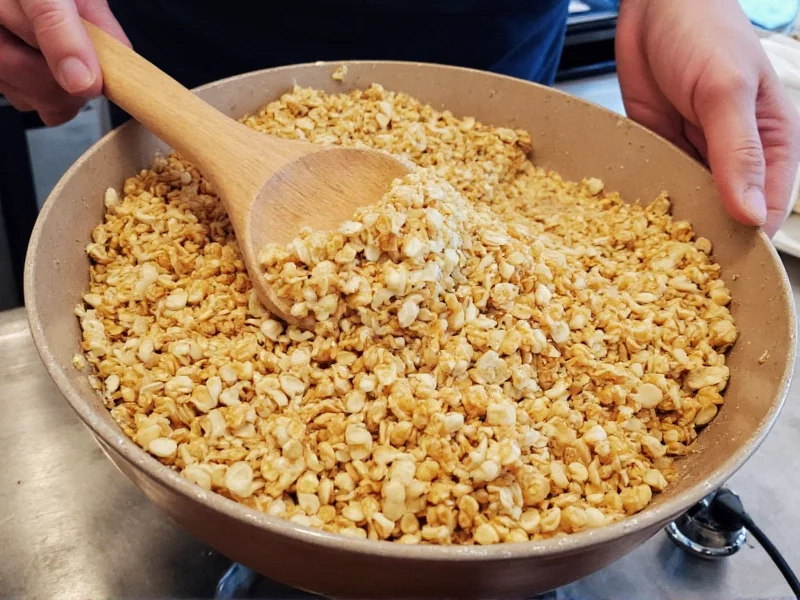Understanding the Science Behind Pungency
Pungency represents a specific type of chemesthetic sensation that stimulates the trigeminal nerve system rather than the traditional taste pathways. Unlike sweet, sour, salty, bitter, or umami—which register through taste buds—pungency creates a burning or stinging feeling through direct chemical interaction with sensory neurons.
The primary compounds responsible for pungency vary by substance:
| Pungent Substance | Active Compound | Primary Sensation Location |
|---|---|---|
| Chili peppers | Capsaicin | Mouth, throat, skin |
| Mustard, horseradish | Allyl isothiocyanate | Nasal passages, sinuses |
| Black pepper | Piperine | Mouth, throat |
| Garlic, onions | Allicin | Mouth, breath |
How Pungency Differs from Related Sensations
Many people confuse pungency with spiciness, but these represent distinct sensory experiences. Spiciness typically refers to the overall flavor profile of spicy foods, while pungency specifically describes the sharp, burning sensation. Heat level in peppers represents pungency intensity, not spiciness.
Unlike sourness (which activates taste receptors) or temperature-related hotness (which involves thermal receptors), pungency triggers pain receptors through chemical interaction. This explains why drinking water provides little relief from capsaicin-induced burning—it doesn't dissolve the oil-based compound.
Measuring Pungency: From Human Panels to Modern Methods
The Scoville Organoleptic Test, developed in 1912, originally measured pungency through human taste panels. Experts would dilute pepper extract until the heat became undetectable, with results reported in Scoville Heat Units (SHU). Pure capsaicin registers at 16 million SHU.
Today, high-performance liquid chromatography (HPLC) provides more accurate measurements by quantifying capsaicinoid concentrations. The results convert to Scoville units using established formulas, eliminating subjectivity from human testing.
The Biological Response to Pungent Compounds
When pungent compounds contact mucous membranes, they bind to TRPV1 receptors—typically activated by temperatures above 42°C (107.6°F). This neurological trick makes your body perceive chemical exposure as actual heat.
The body responds by releasing endorphins, creating the well-known "chili high." Regular consumption can increase tolerance as nerve receptors temporarily desensitize. This adaptation explains why frequent consumers of spicy foods can handle higher pungency levels over time.
Pungency Across Different Contexts
While most associate pungency with food, the term applies across multiple domains:
- Food Science: Critical for flavor profiling in hot sauces, ethnic cuisines, and processed foods
- Wine Tasting: Describes sharp, assertive aromas in certain varietals
- Chemistry: Characterizes volatile compounds with strong odors
- Pharmaceuticals: Topical pain relief products use controlled pungency for therapeutic effects
Safety Considerations with Highly Pungent Substances
Extreme pungency requires careful handling. Pure capsaicin and similar compounds can cause chemical burns, respiratory distress, and eye damage. Proper protective equipment—including gloves and eye protection—proves essential when working with concentrated pungent substances.
Consumers should gradually increase exposure to highly pungent foods. Sudden consumption of extremely hot peppers can trigger severe gastrointestinal distress, sweating, and temporary cardiovascular effects. Individuals with certain medical conditions should consult healthcare providers before consuming highly pungent substances.
Practical Applications of Pungency Knowledge
Understanding pungency helps in multiple practical scenarios:
- Chefs can balance heat levels in recipes for target audiences
- Food manufacturers develop products with consistent heat profiles
- Home cooks select appropriate peppers for specific dishes
- Consumers understand why certain remedies (like dairy) alleviate pungency effects
- Researchers develop new applications for pungent compounds in medicine
Common Misconceptions About Pungency
Several myths persist about pungent substances. Contrary to popular belief, the seeds of chili peppers contain minimal capsaicin—the highest concentrations exist in the white pith surrounding the seeds. Additionally, pungency doesn't correlate with pepper color; many mild peppers turn red when ripe.
Another misconception suggests that sweating from spicy food indicates detoxification. In reality, this represents your body's thermoregulatory response to the perceived heat from pungent compounds.
Frequently Asked Questions
What's the difference between pungency and spiciness?
Pungency refers specifically to the sharp, burning sensation caused by chemical compounds activating pain receptors, while spiciness describes the overall flavor profile of spicy foods. Pungency represents a physiological response, whereas spiciness encompasses multiple sensory elements including aroma, flavor, and heat.
Why doesn't water help with spicy food burn?
Water doesn't alleviate pungency because capsaicin and similar compounds are hydrophobic (oil-soluble). Water simply spreads the oil-based irritant rather than dissolving it. Dairy products containing casein protein work better as they bind to capsaicin molecules and help remove them from nerve receptors.
How can I build tolerance to pungent foods?
Regular, gradual exposure builds pungency tolerance. Start with mild peppers and slowly increase heat levels over time. Consistent consumption temporarily desensitizes TRPV1 receptors, requiring higher concentrations to produce the same sensation. This adaptation typically reverses after several weeks without exposure.
Are there health benefits to consuming pungent foods?
Research suggests moderate consumption of pungent compounds may offer benefits including improved metabolism, reduced inflammation, and pain relief. Capsaicin shows promise in topical pain management. However, excessive consumption can cause gastrointestinal issues, so balance remains important for most individuals.
What's the world's hottest pungent substance?
Resiniferatoxin, found in Moroccan cactus euphorbia, measures approximately 16 billion Scoville units—1,000 times hotter than pure capsaicin. This compound serves primarily in medical research rather than culinary applications due to its extreme potency and potential danger.











 浙公网安备
33010002000092号
浙公网安备
33010002000092号 浙B2-20120091-4
浙B2-20120091-4